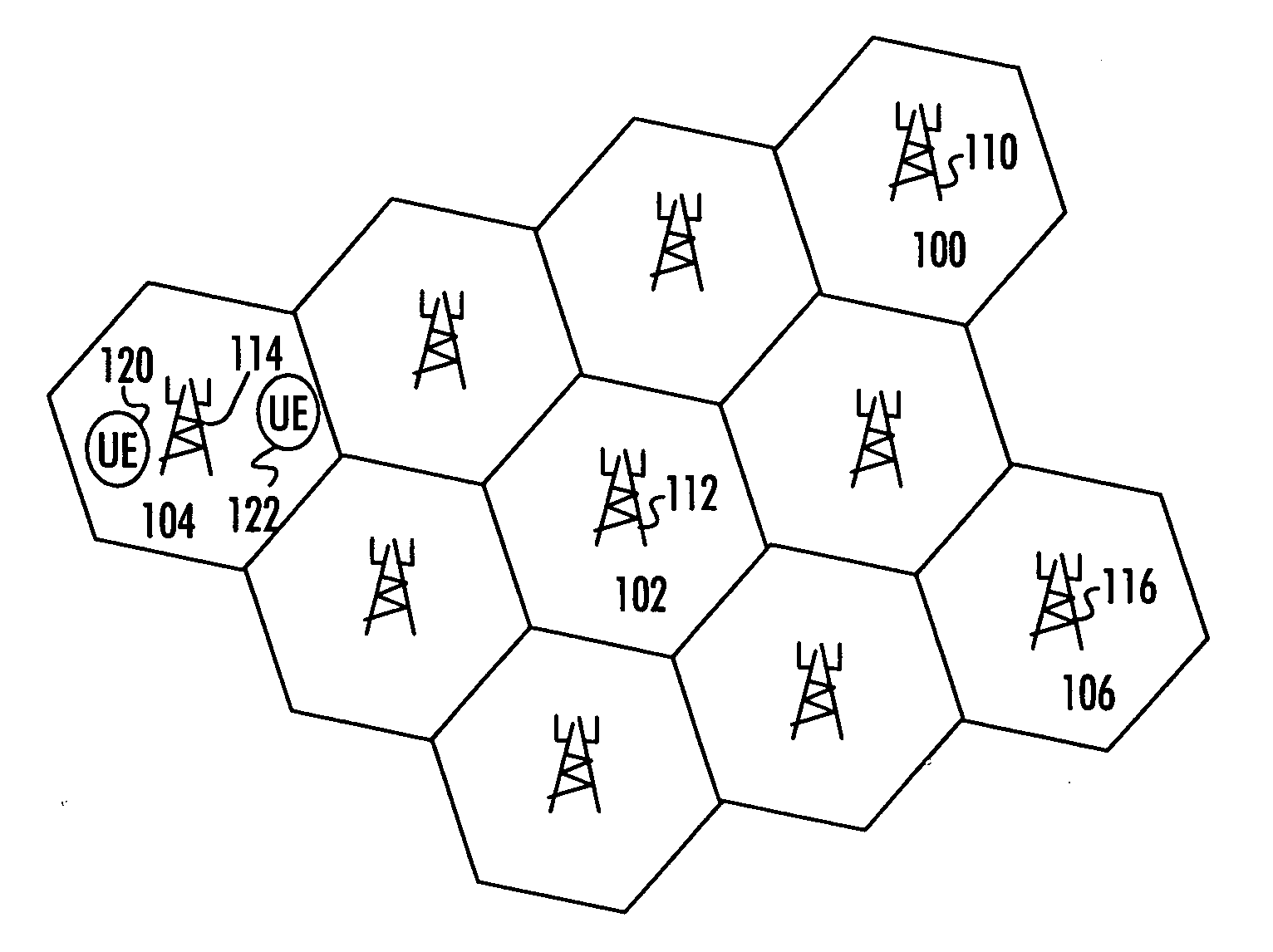Inter-System Interference Control
a technology of inter-system interference and control, applied in the field of cellular radio telecommunications, can solve problems such as interference between the two cellular telecommunication systems
- Summary
- Abstract
- Description
- Claims
- Application Information
AI Technical Summary
Benefits of technology
Problems solved by technology
Method used
Image
Examples
Embodiment Construction
[0017]The following embodiments are exemplary. Although the specification may refer to “an”, “one”, or “some” embodiment(s) in several locations, this does not necessarily mean that each such reference is to the same embodiment(s), or that the feature only, applies to a single embodiment. Single features of different embodiments may also be combined to provide other embodiments.
[0018]A general architecture of a cellular telecommunication system providing voice and data transfer services to mobile terminals is illustrated in FIG. 1. FIG. 1 illustrates the cellular topology of the cellular telecommunication system where base stations 110 to 116 provide communication link to within their respective coverage areas known as cells 100 to 106. For instance, a mobile terminal 120 located in a cell 104 is served by a base station 114 associated with the cell 104. When the mobile terminal 120 moves from the cell 104 to another neighboring cell, the communication link is handed over to a base ...
PUM
 Login to View More
Login to View More Abstract
Description
Claims
Application Information
 Login to View More
Login to View More - R&D
- Intellectual Property
- Life Sciences
- Materials
- Tech Scout
- Unparalleled Data Quality
- Higher Quality Content
- 60% Fewer Hallucinations
Browse by: Latest US Patents, China's latest patents, Technical Efficacy Thesaurus, Application Domain, Technology Topic, Popular Technical Reports.
© 2025 PatSnap. All rights reserved.Legal|Privacy policy|Modern Slavery Act Transparency Statement|Sitemap|About US| Contact US: help@patsnap.com



